In June 2014 we were both about to start new jobs and also prepping for our big move from Austin TX to Portland OR – so we took the downtime opportunity to head to Europe for 3 weeks of carefree explorations. These are the highlights of our jaunt through Prague, Vienna, Budapest, Munich & Zurich in the summer of 2014.
Hiking up Mt Titlis in Engelberg, Switzerland
After enjoying the beauty of Zurich and consuming dangerous amounts of fondue, we decided to take a day trip out to the alpine wonderland of Engelberg to visit Mt Titlis. Nestled in a picturesque valley in the Swiss Alps, Engelberg almost looks like a picture postcard – set along an alpine lake, surrounded by verdant wild flower filled pastures and snow capped glacier peaks. No wonder its picturesque surroundings have been featured in numerous Bollywood movies as a backdrop for their mandatory song and dance routines. This is also the starting base for hikes and ski lift rides up to Mt Titlis, the main reason we were visiting.
After exploring the quaint Engelberg town setting, we enthusiastically decided on a whim to hike up the mountain. It would have been great if our attire and footwear were more suited for such a demanding activity, but poor outfit planning on our part meant we fit the part of underprepared tourists perfectly (see pics below). Somehow even the sight of locals decked out in full hiking gear and armed with their climbing sticks failed to impress upon us the dangers of our foolhardy plan to attack the mountain in party shoes. As we huffed and puffed our way up the steep hiking trails, even the ubiquitous and well endowed Swiss cows seemed to be eyeing us with trepidation, with their fresh dung cakes strewn all about the paths with the sole purpose of turning our hiking adventure into even more of an obstacle course. We presume they were shaking those massive melodious Swiss bells around their neck in displeasure at us as well. After our strenuous hike which consisted of a quite a few wrong turns and multiple pauses to take in the breathtaking alpine panorama views, we finally managed to get up to the cable car station at Trubsee. Our reward was yet another picturesque alpine lake set against a backdrop of snow capped peaks, where we promptly set about desecrating the pristine waters by soaking our weary feet in the lake to freshen up.
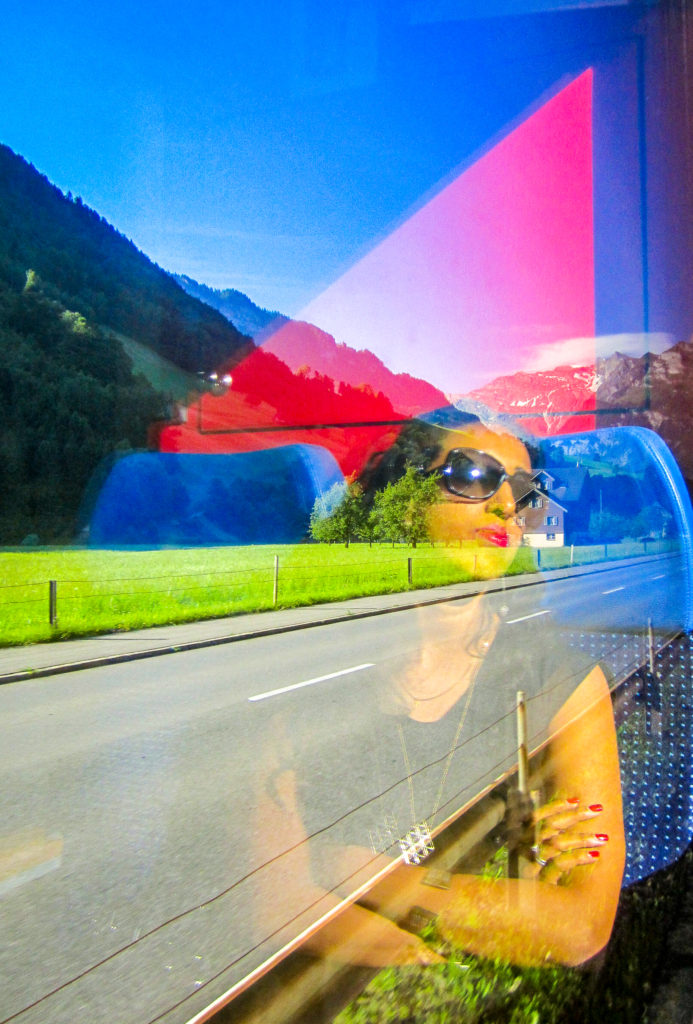
On the train to Engelberg
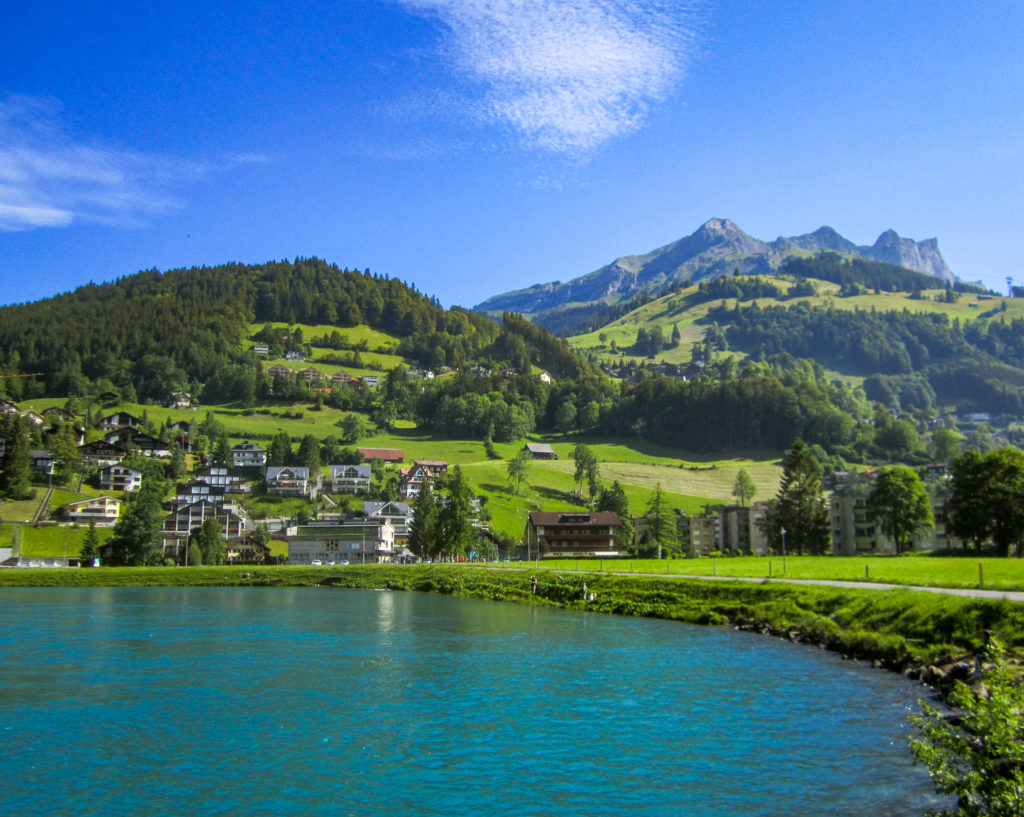
Picturesque town of Engelberg
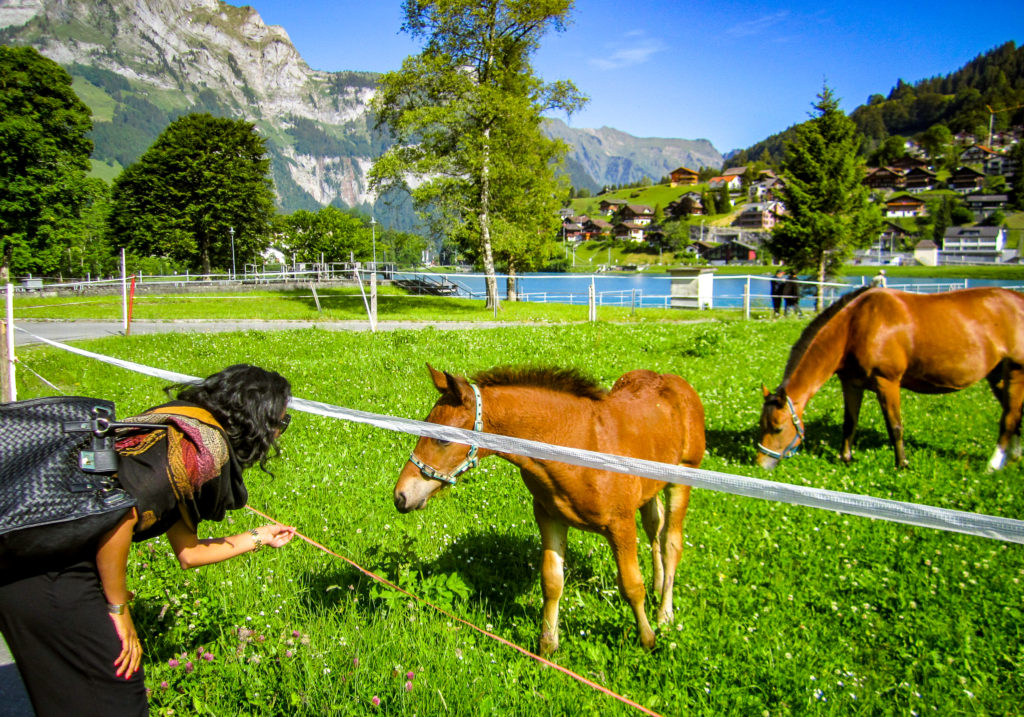
Hi Horsey
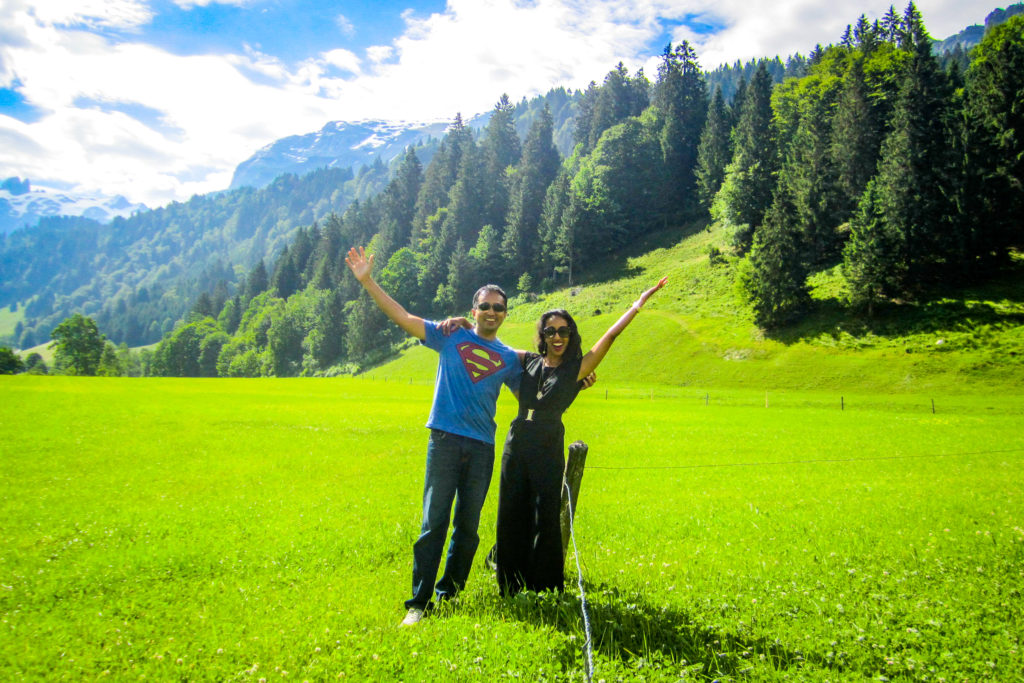
Hello from Engelberg!
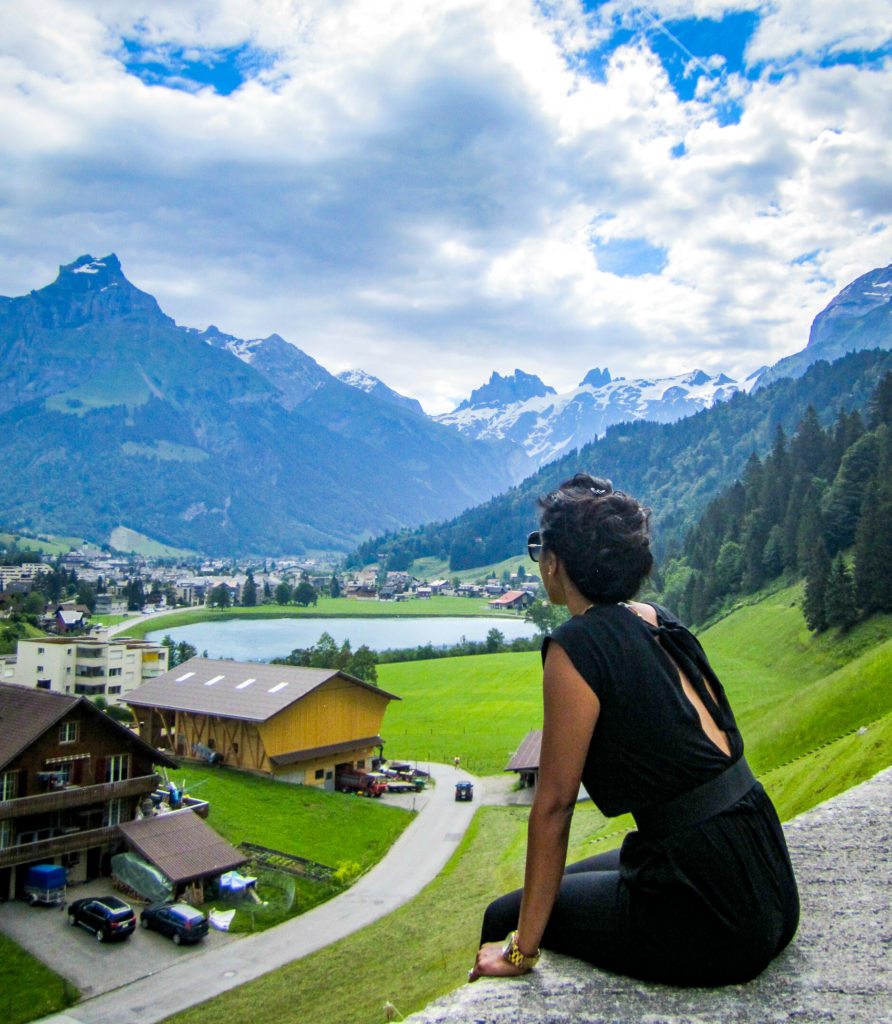
Pondering which peak to summit
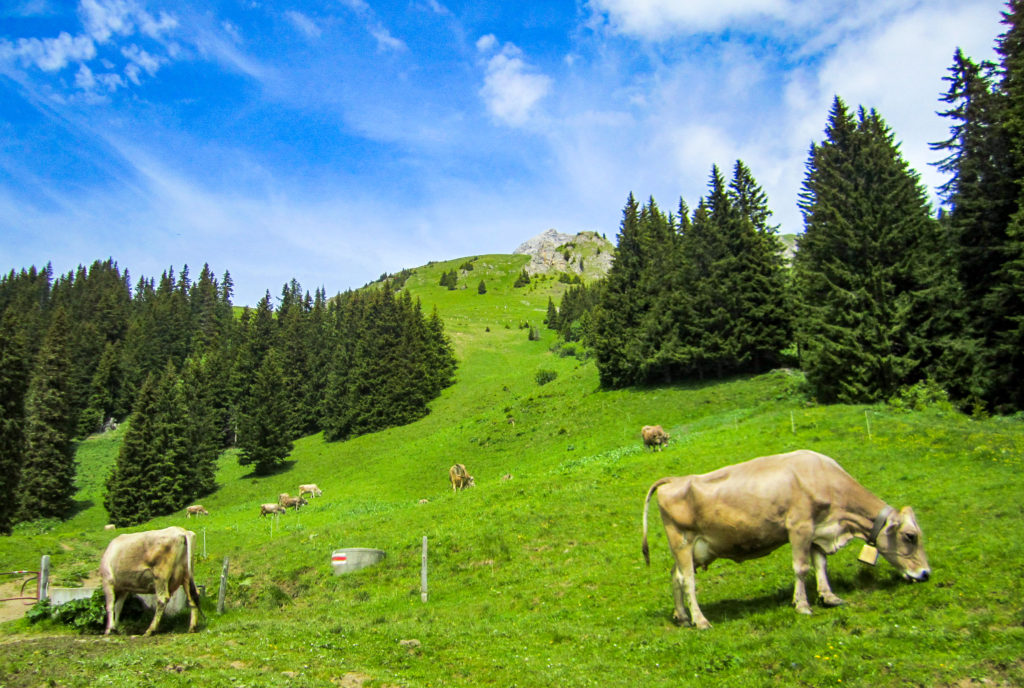
Accosted by Swiss cows at the start of our hike
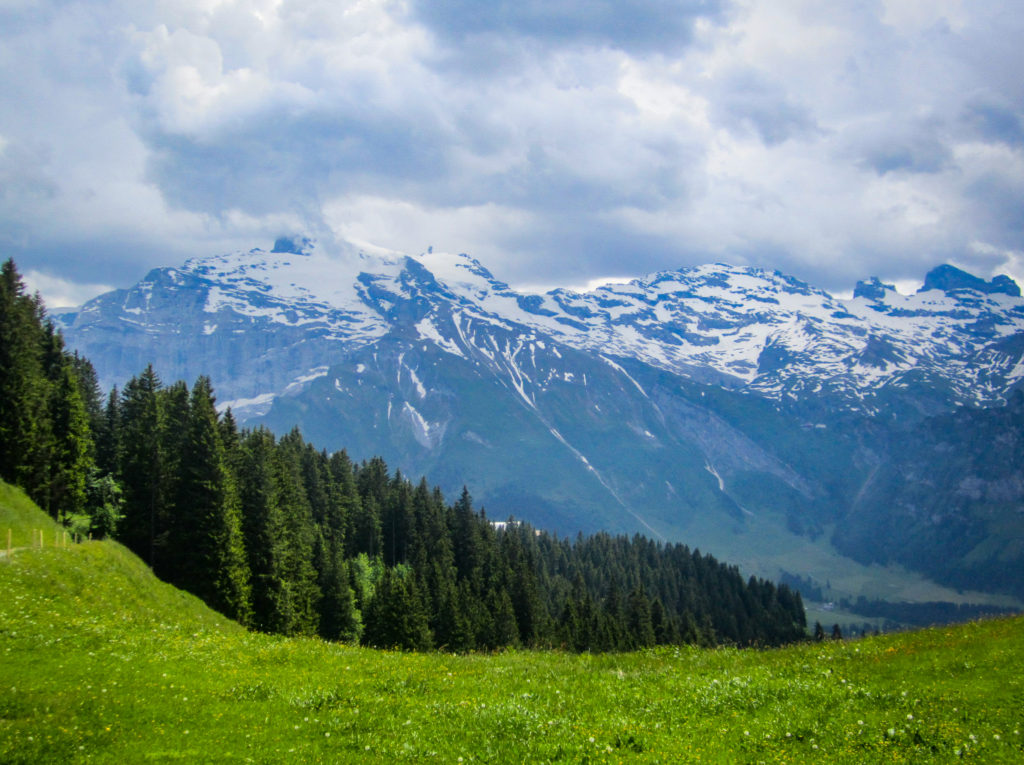
Amazing alpine view of the Swiss Alps along the way
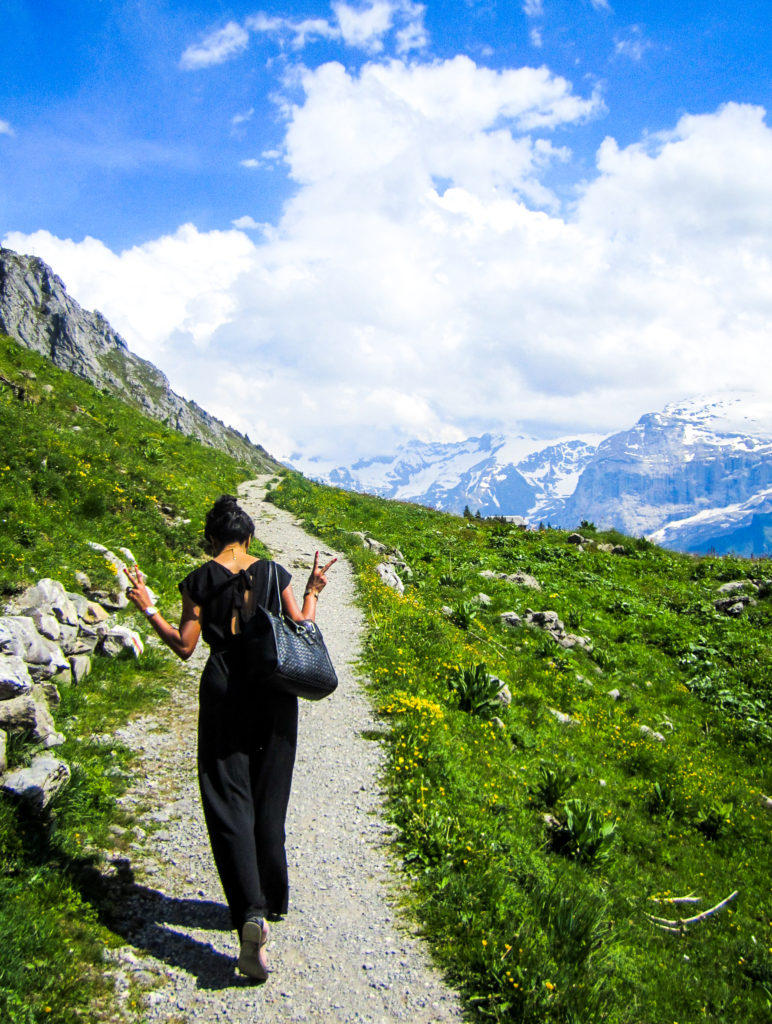
How not to dress for a hike up a steep mountain
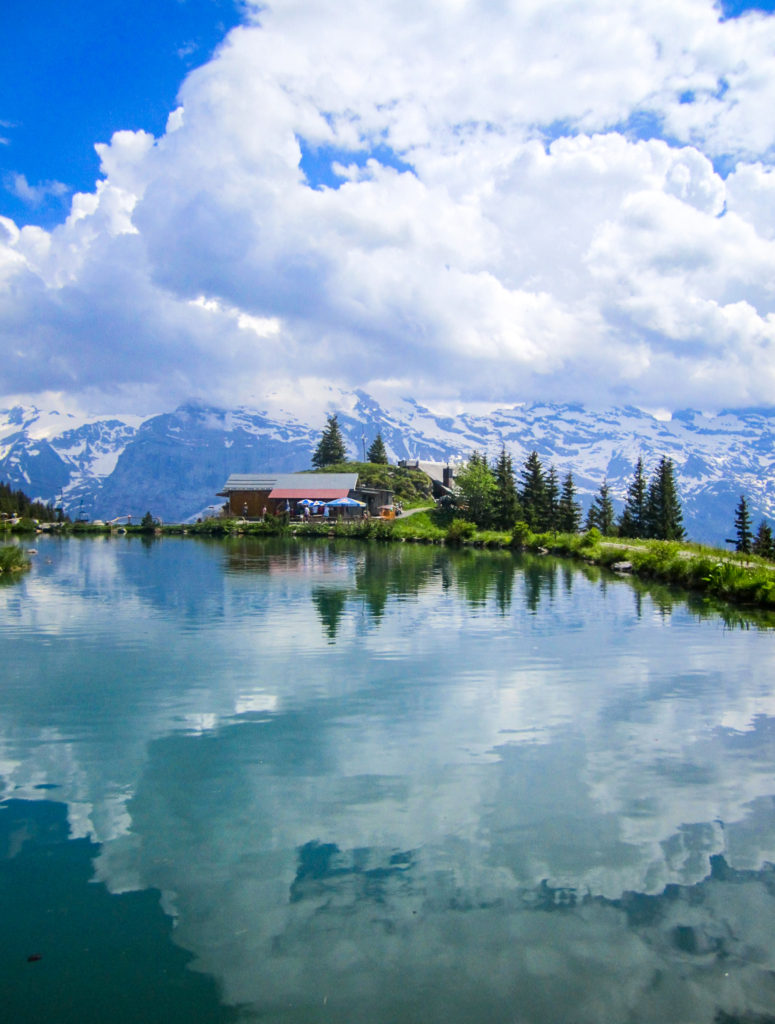
Cool refreshing waters of Trubsee
Bavarian Biergartens in Munich, Germany
German beer has been my favorite tipple, particularly their wheat beer varieties – known as Weizenbier, Weissbier or Hefeweizen. Munich is at the heart of Bavaria, where the famous Reinheitsgebot German beer purity law was enshrined in 1516, decreeing that only barley, hops and water could be used to produce beer. We decided to do some quality inspection of the Bavarian adherence to the law by sampling beers from Munich’s finest breweries – Augustiner, Lowenbrau, Hoffbrahaus, Franziskaner, and Paulaner to name a few. Alas, since we were visiting in mid-June we were unable to partake in the full festivities of Oktoberfest. But we still managed to experience some of the Biergarten culture at various open air markets in Munich.
While I was in Singapore, Erdinger was the most widely available German beer and hence it quickly solidified itself as my go-to wheat beer. So visiting the Erdinger Brewery for a tour at the source was one of the priorities of our Munich stay. After making our way out to the town of Erding, we sadly found out that prior reservations were required and the tours were full for the day. I was readying myself for a disappointingly morose slow train ride back to Munich, but Shelly thankfully had other ideas and heartily took on the challenge to negotiate 2 spots for us with some Oscar worthy dramatic pleading. Spoiler alert: tears flowed even more freely than the beer from the Erdinger taps. The brewery tour did not disappoint – it was an up close and insightful view into the brewing and manufacturing process of my beloved drink. However the undoubted highlight of our day was getting treated in the biergarten to 2 hours of unlimited pours of all 9 varieties of Erdinger beer that were currently in production. Prost!
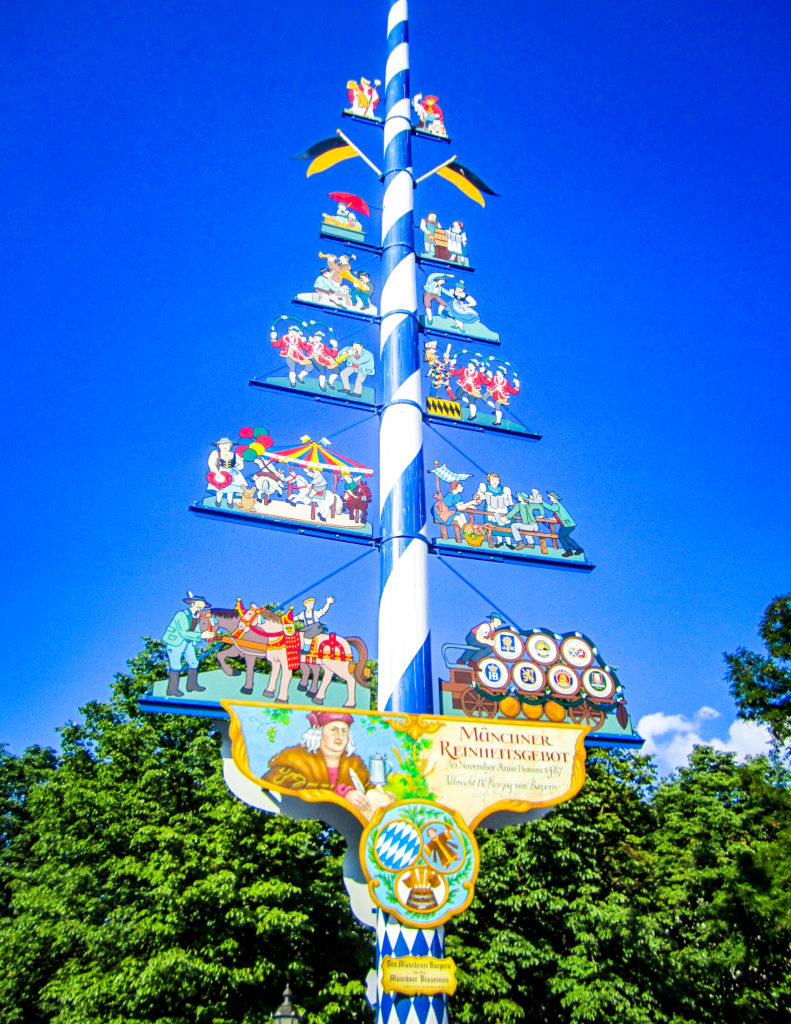
Maypole showing Munich breweries
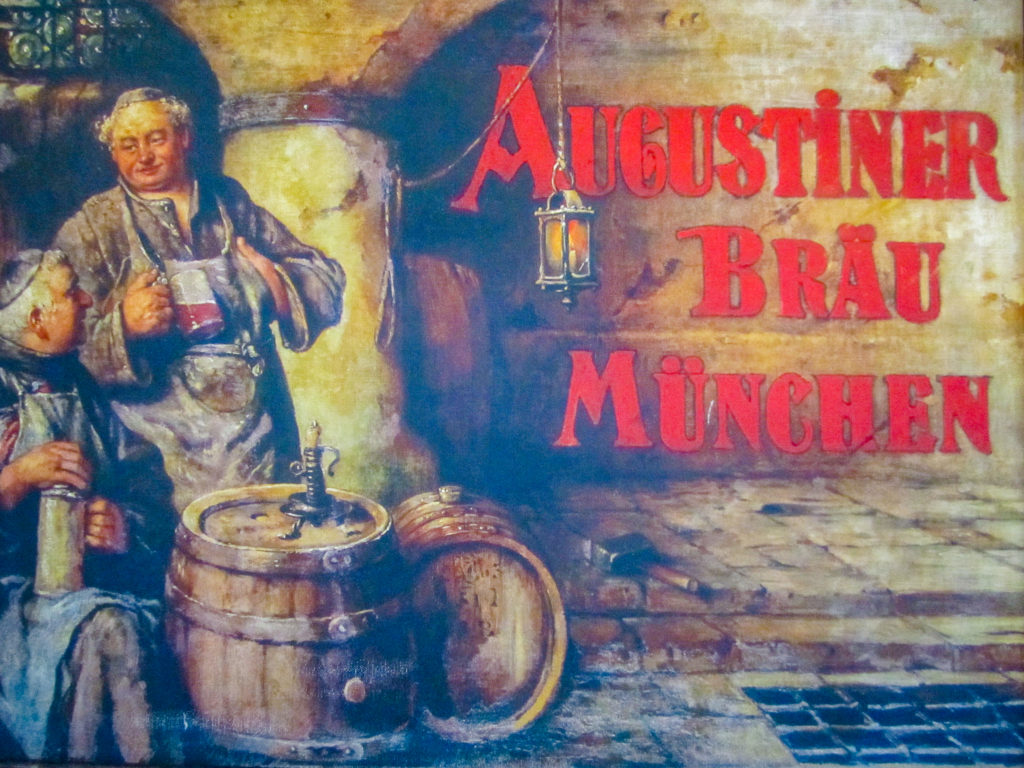
First stop at Augustiner Brewery
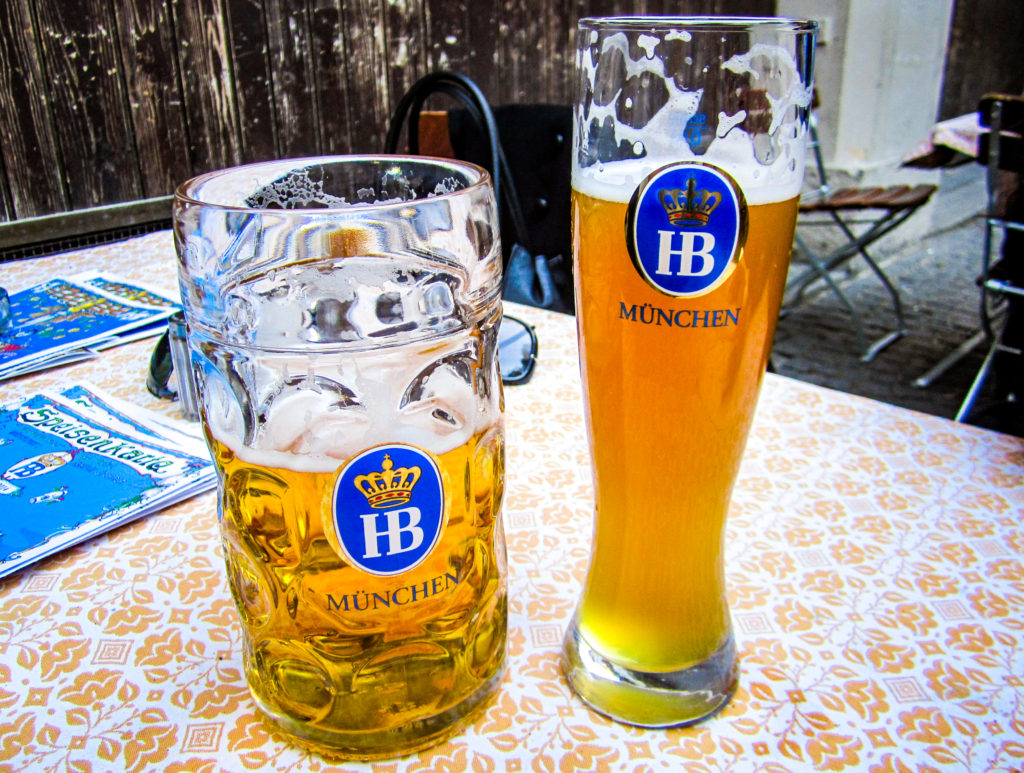
Hofbrahaus lived up to the hype
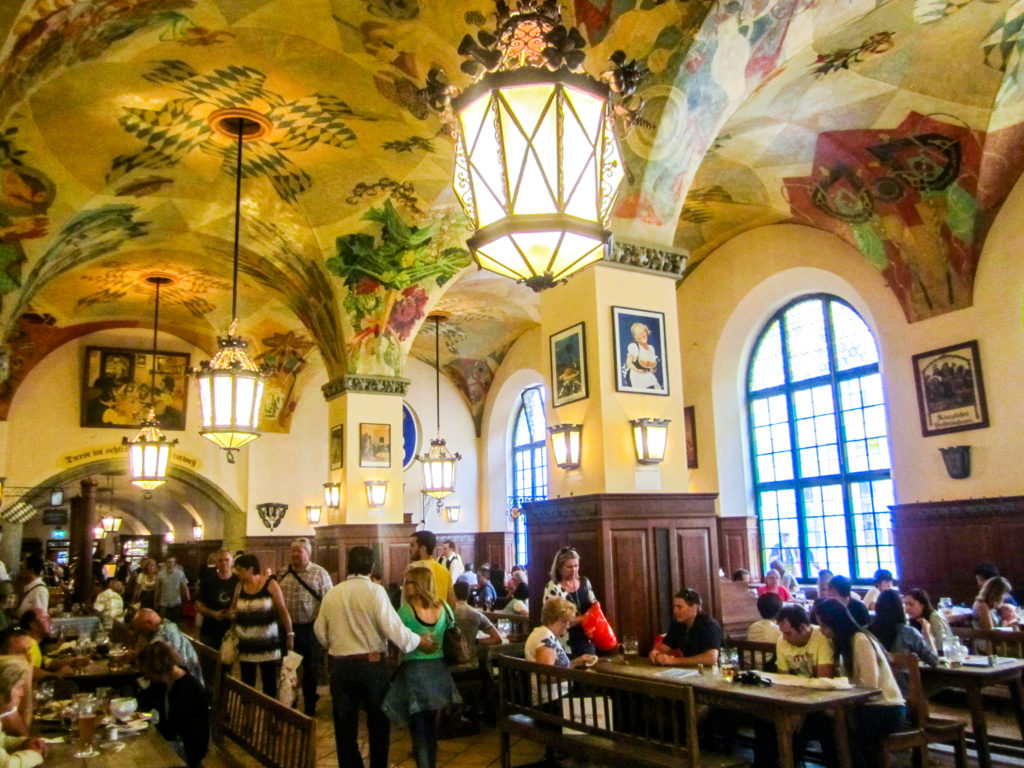
Richly frescoed ceilings of the indoor bierhall
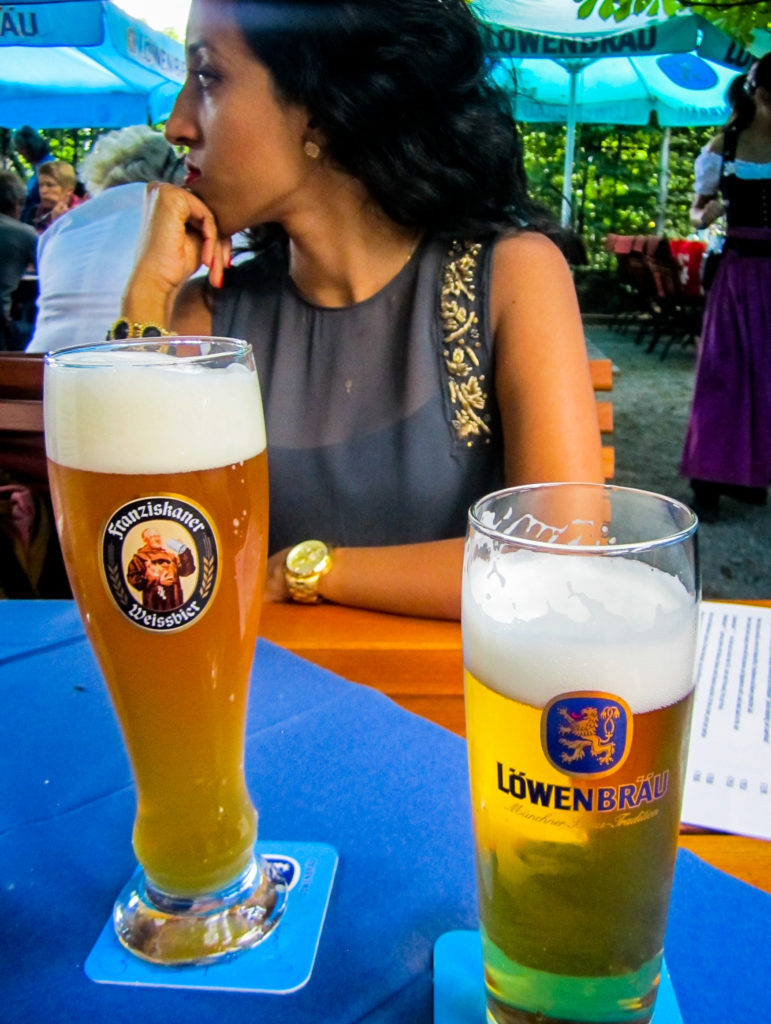
Already thinking about the next brewery…
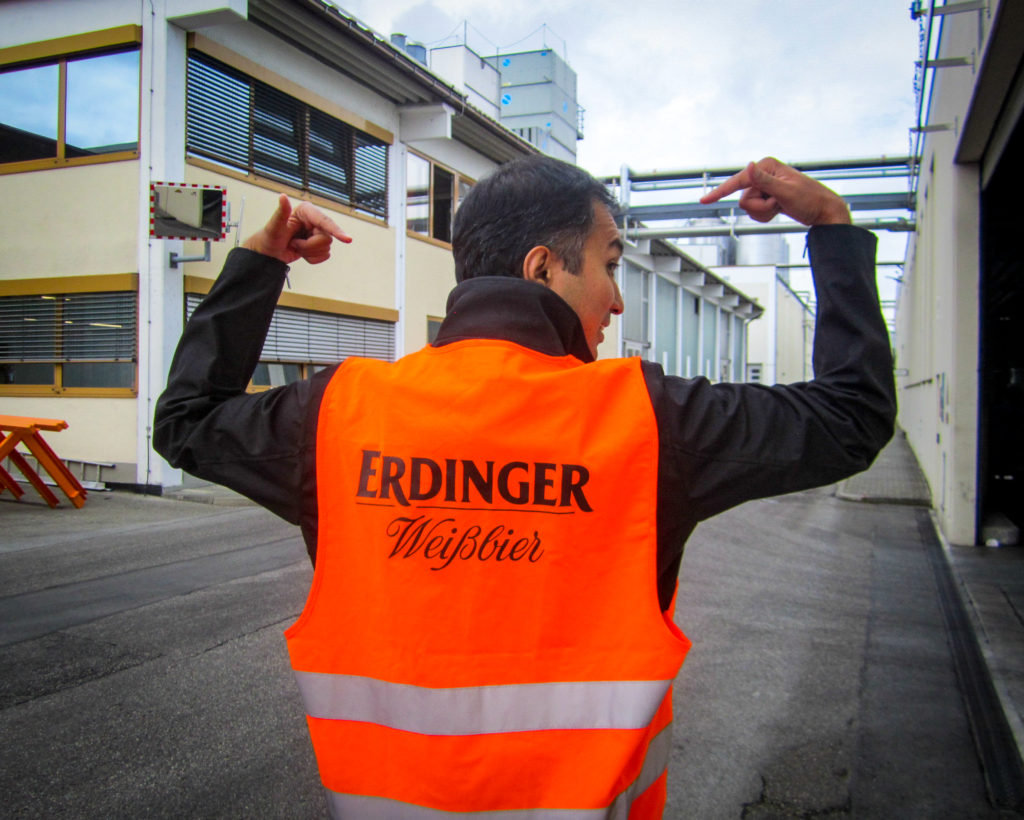
Made it into the Erdinger tour!
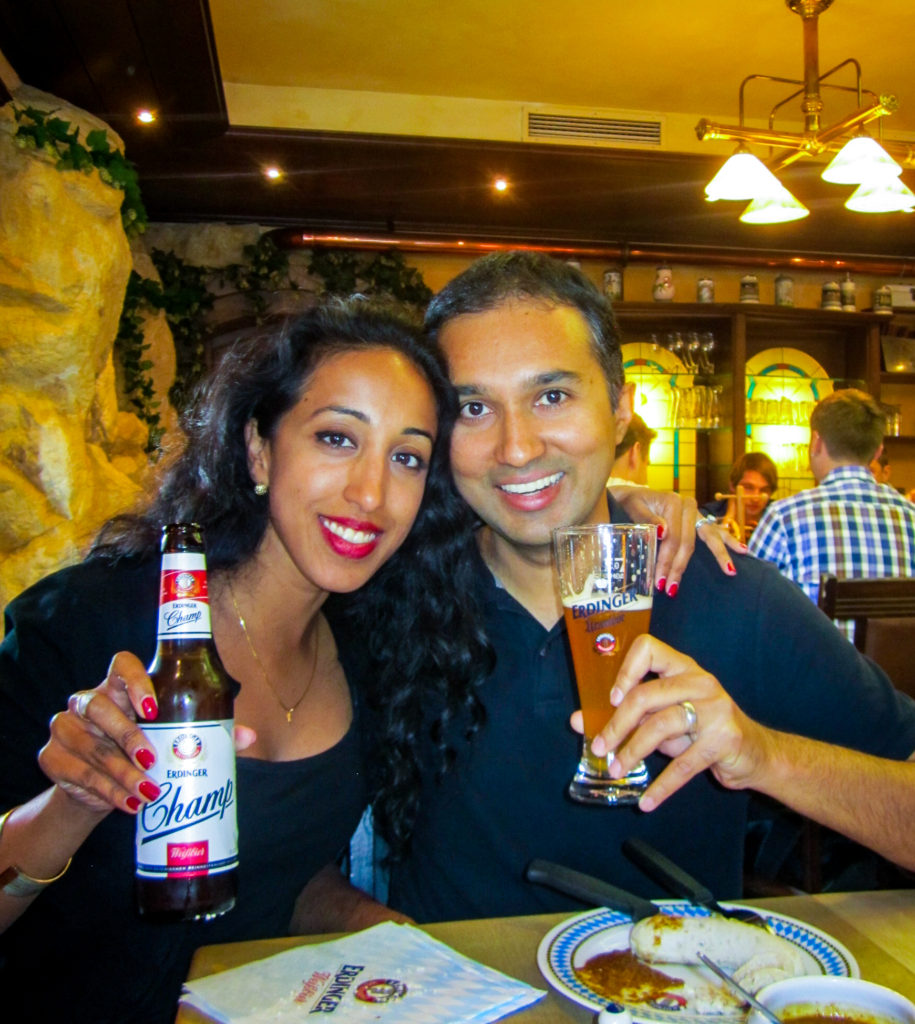
Getting our Euros worth in the tasting biergarten
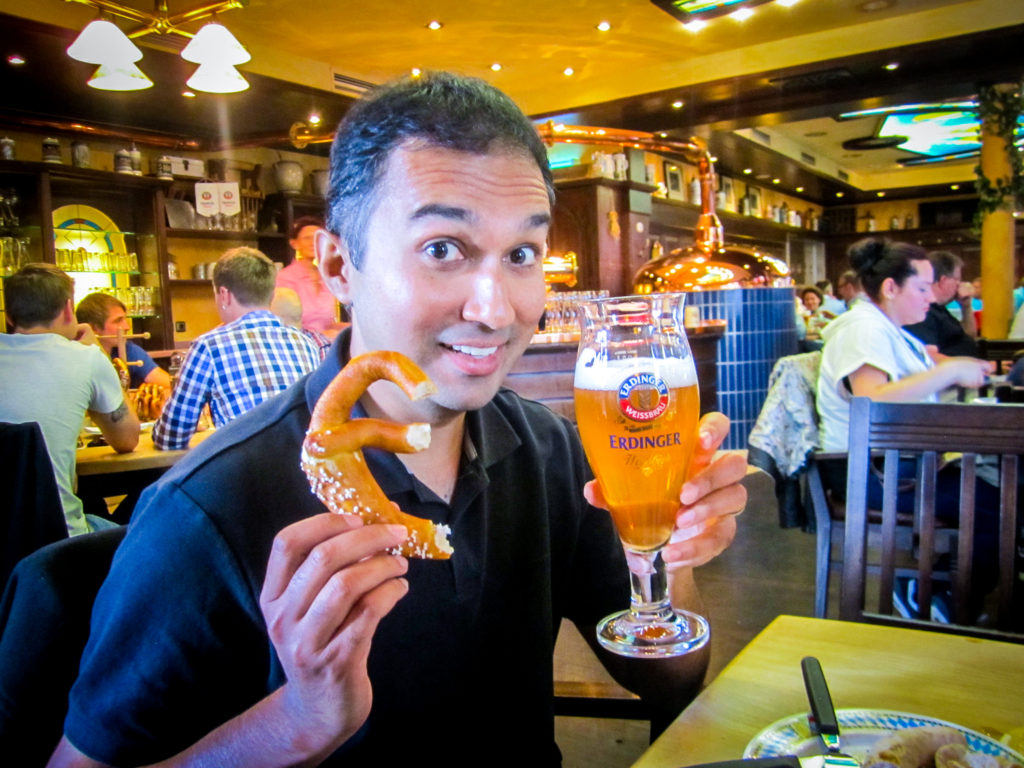
E is for Erdinger
Charles Bridge & Old Town Square in Prague, Czech Republic
If we had to pick one stand out memory from our Prague adventures, then traversing across Charles Bridge multiple times is definitely the foremost. During our 4 day stay in Prague we literally lost count of how many times we crossed the iconic Bridge – either to get to sights or dining/drinks locations on either side of the Vltava river that it straddles, or just to take in the views from the bridge and admire its various baroque statues.
The stone bridge gets it name from King Charles IV who began the construction in 1357. At over 500m length and 10m width, Charles Bridge was the only way to cross the Vltava in the Middle Ages, connecting the Old Town and Prague Castle sides with the requisite lookout towers at each end. Today this exclusively pedestrian bridge is a great landmark and location from which to map out explorations of Prague, albeit one of the city’s most crowded spots all day. As one of the symbols of Prague, this is one of the most popular tourist attractions in town, so be ready to share the bridge with lots of others strolling across at all times of the day.
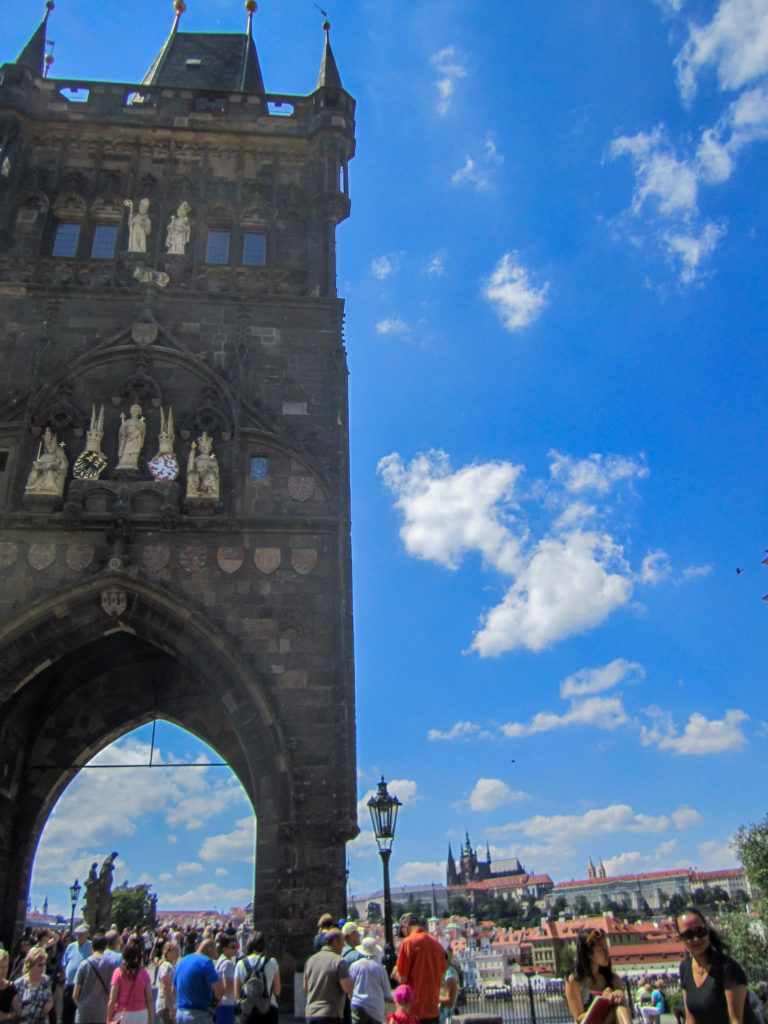
Watchtower on the Old Town side of the bridge
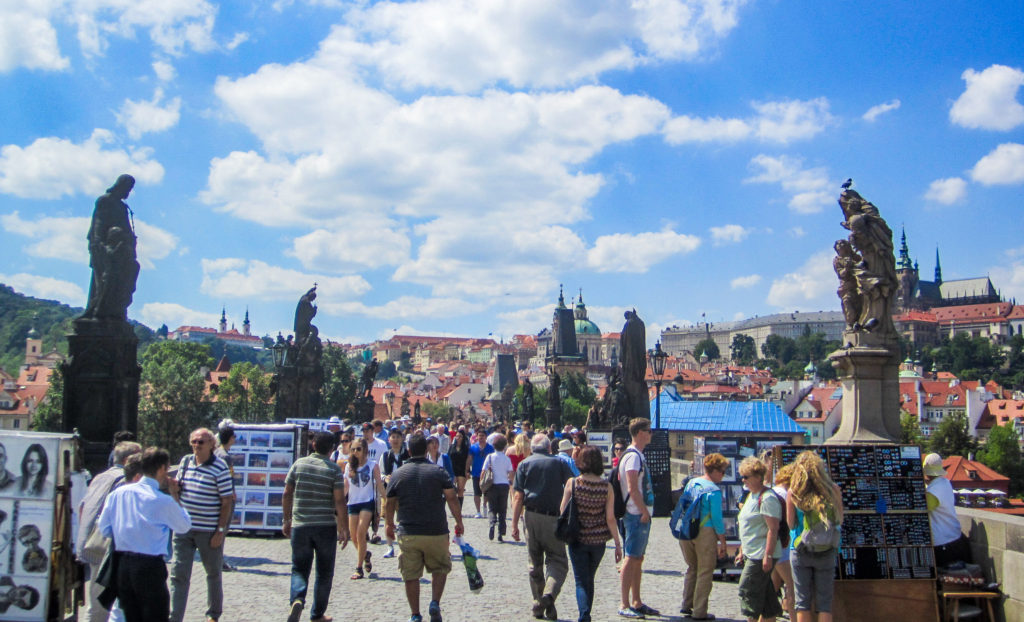
Charles Bridge crowded at all times of the day
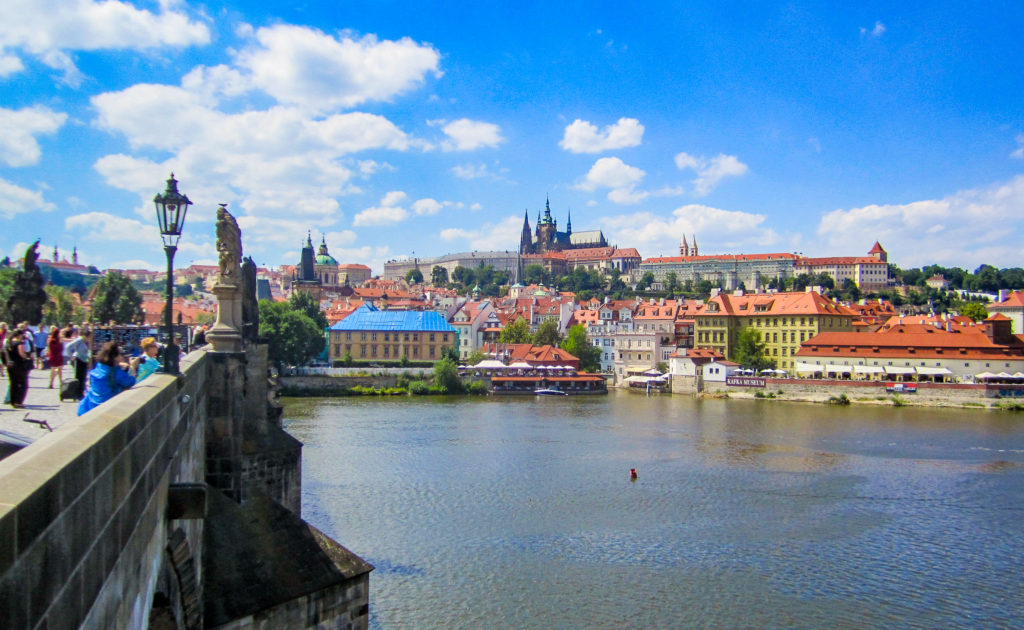
Views of Prague Castle across from the Vltava River
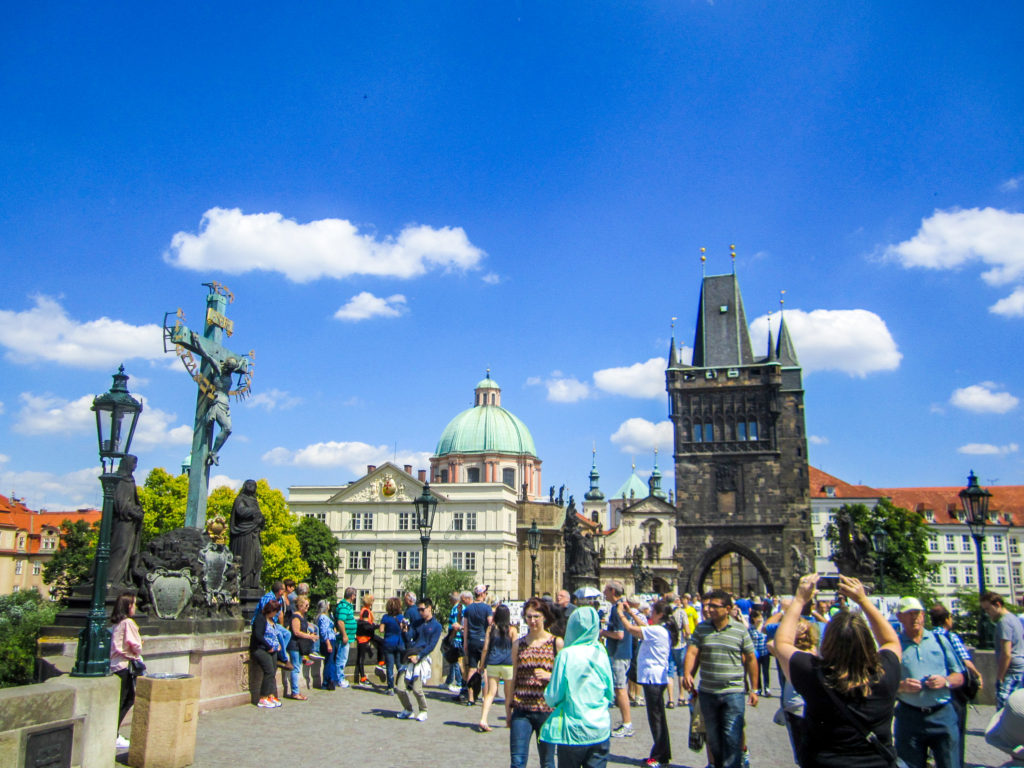
Looking towards Old Town
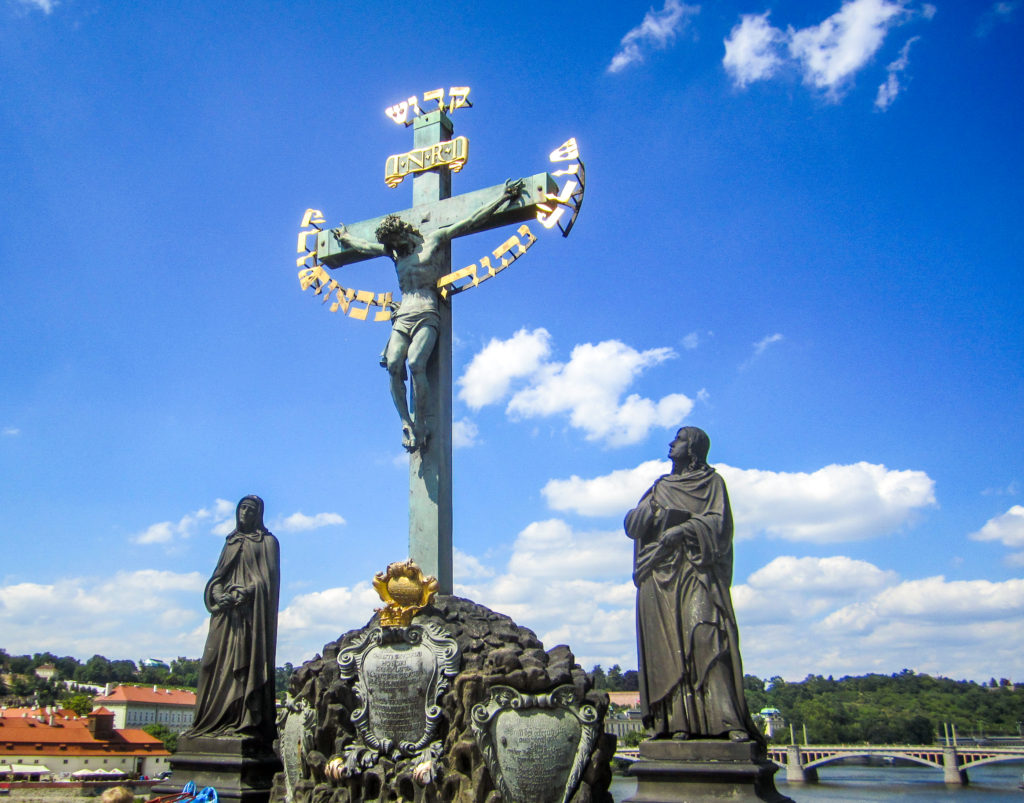
Crucifix installation – 1 of the 30 statues along the balustrade of the bridge
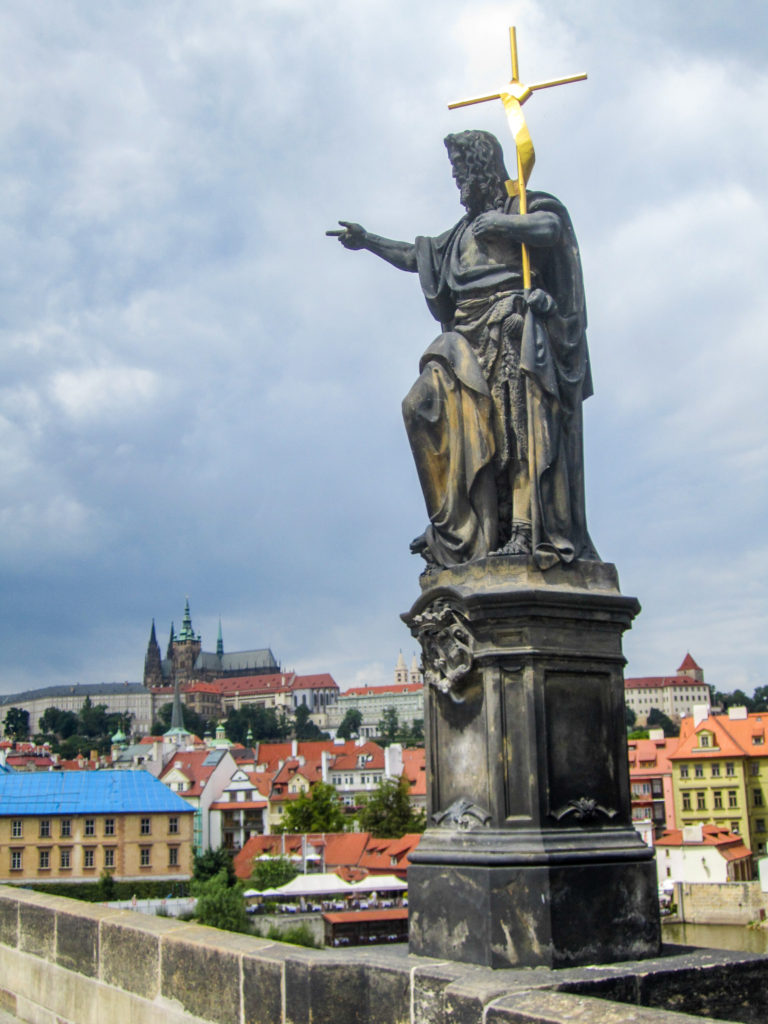
Another statue along the bridge
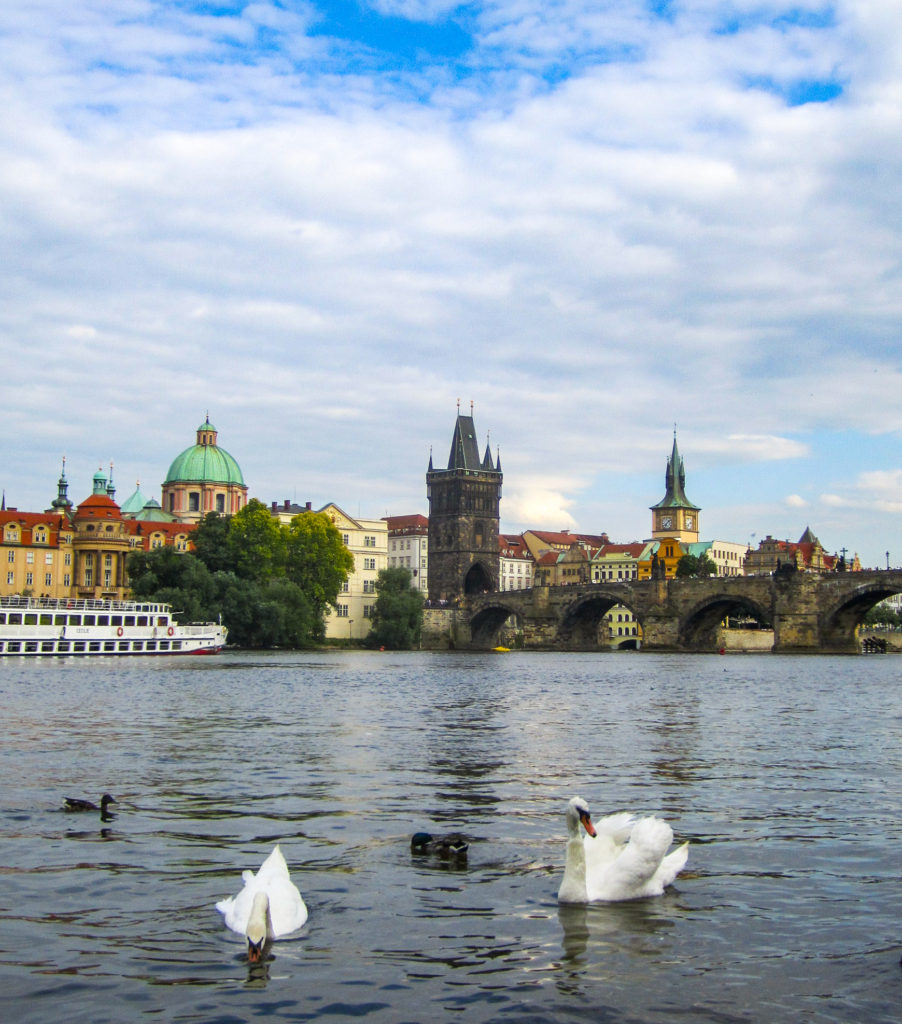
Swans idling the time away on the Vltava River
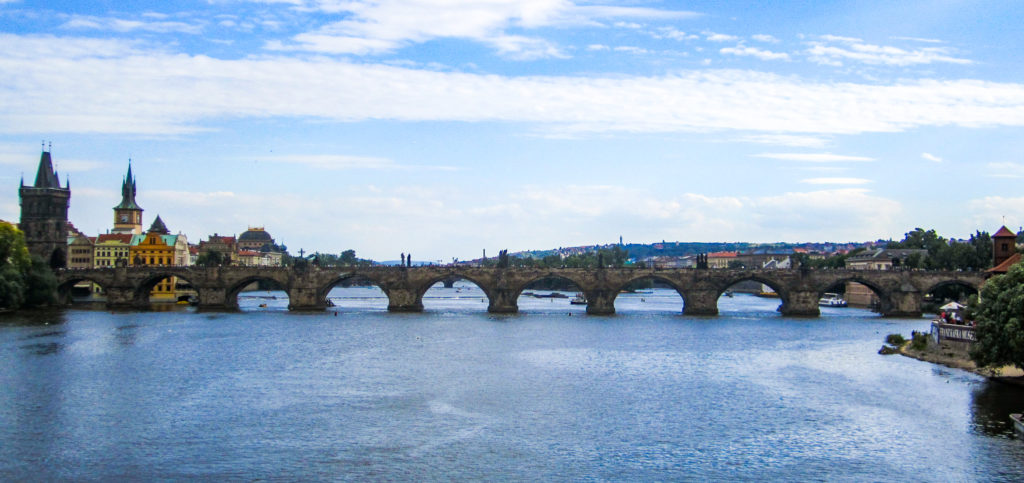
The full span of Charles bridge
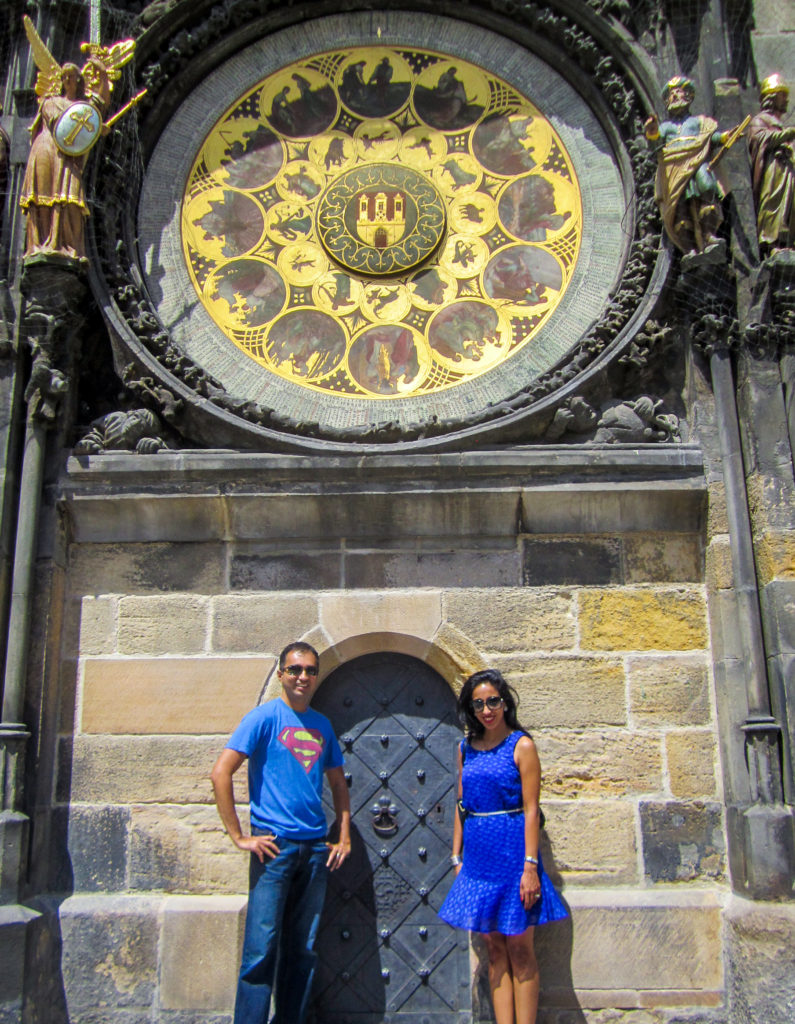
The Astronomical Clock in Old Town
Schönbrunn Palace in Vienna, Austria
Schönbrunn Palace is the most visited attraction in Vienna, and one of the best examples of Austrian Baroque and Rococo architectural styles. The area was initially purchased by Emperor Maximillian as a summer hunting retreat in 1569, and was bequeathed to descendants of the Habsburg dynasty till the foundation of the Austrian republic in 1918. The longest reigning Austrian Emperor Franz Joseph was born in the palace and died here at the age of 86 in 1916.
Schönbrunn Palace has over 1400 rooms but only a few of them can be visited by tourists. Stepping through some of the staterooms and private chambers offered us a view of the opulent Rococo style decorations, with heavily gilded artifacts all around. But we felt the true beauty of the Palace was outside – with its bright yellow exterior walls, precisely manicured sprawling gardens, fountains, monuments and and acres of lawns and hedge mazes to explore. We took the wide gravel walkways in front of the Palace to the statue of Neptune that is the centerpiece of the main fountain, then trudged up the nearby hill to a gazebo like structure called the Gloriette for even better views of Schönbrunn’s grandeur and scale.
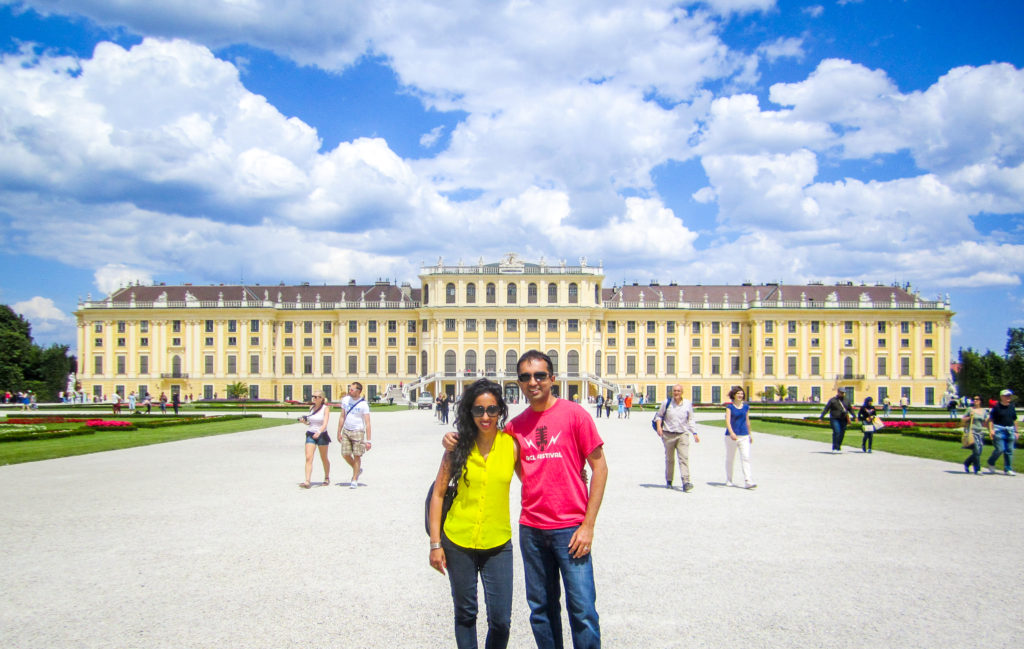
Glorious Schönbrunn Palace
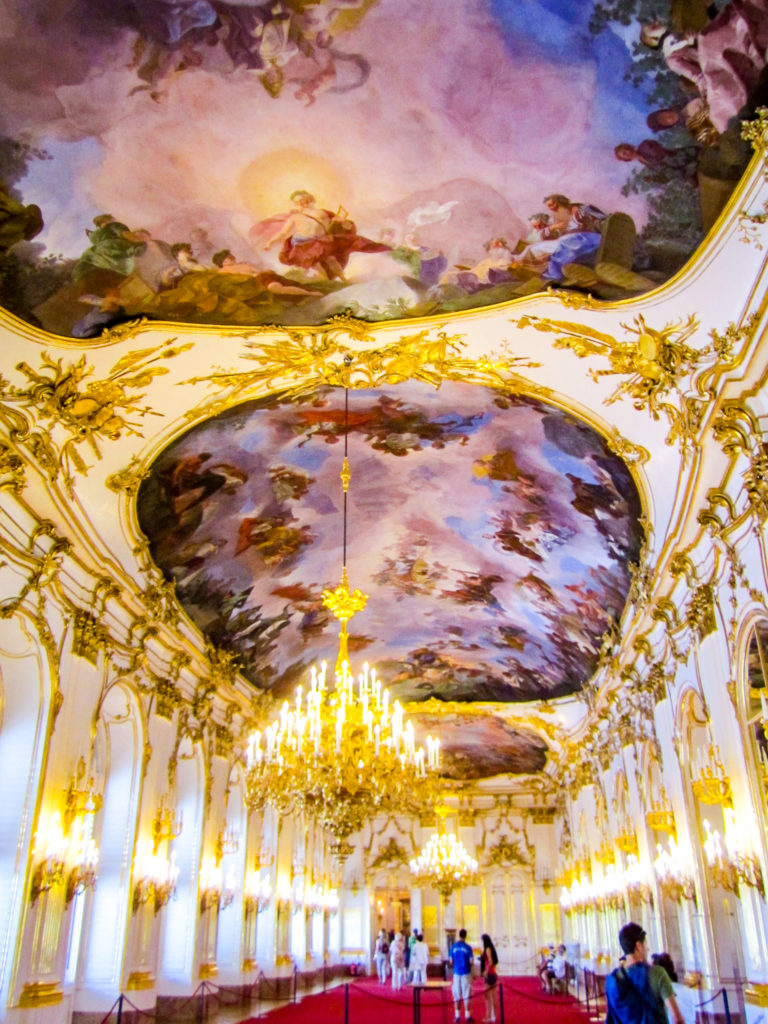
Opulent gilded interiors
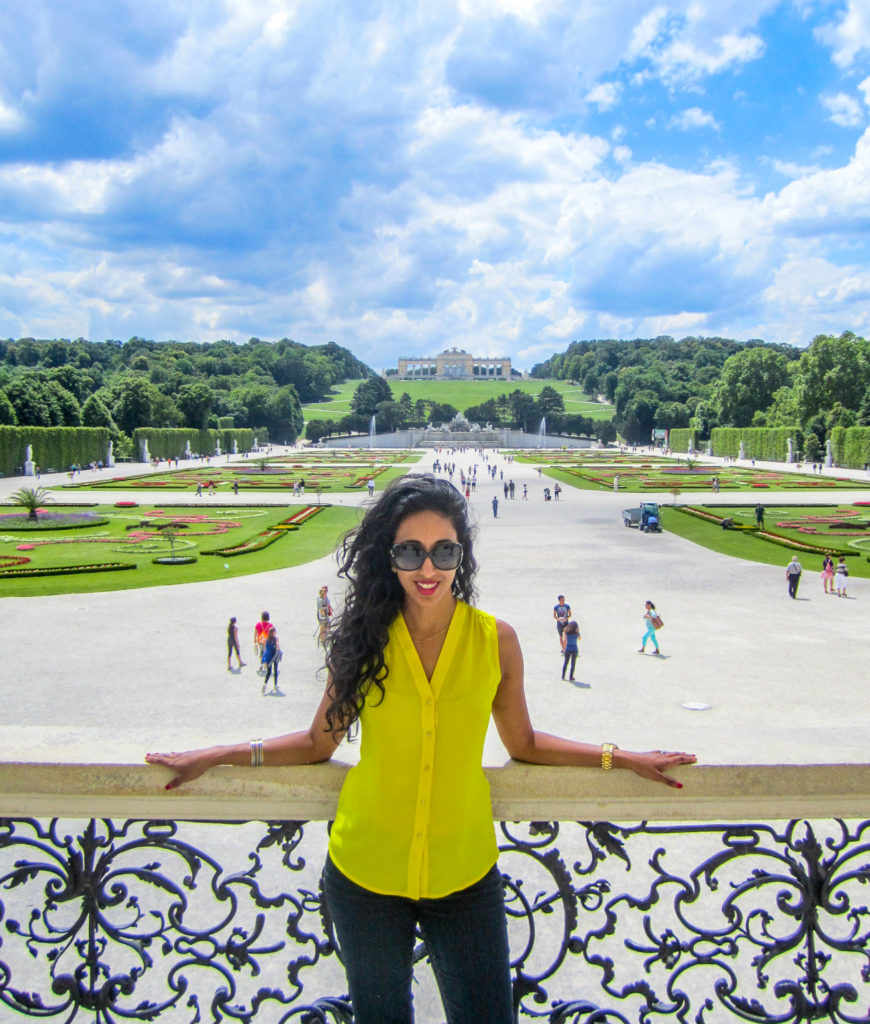
View of the sprawling gardens
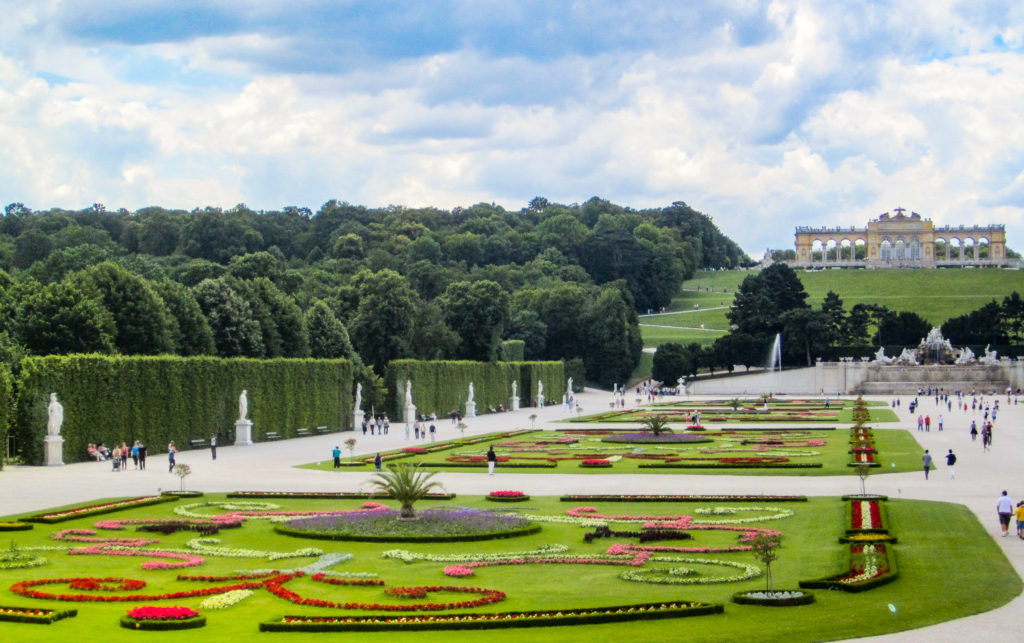
Neatly manicured gardens
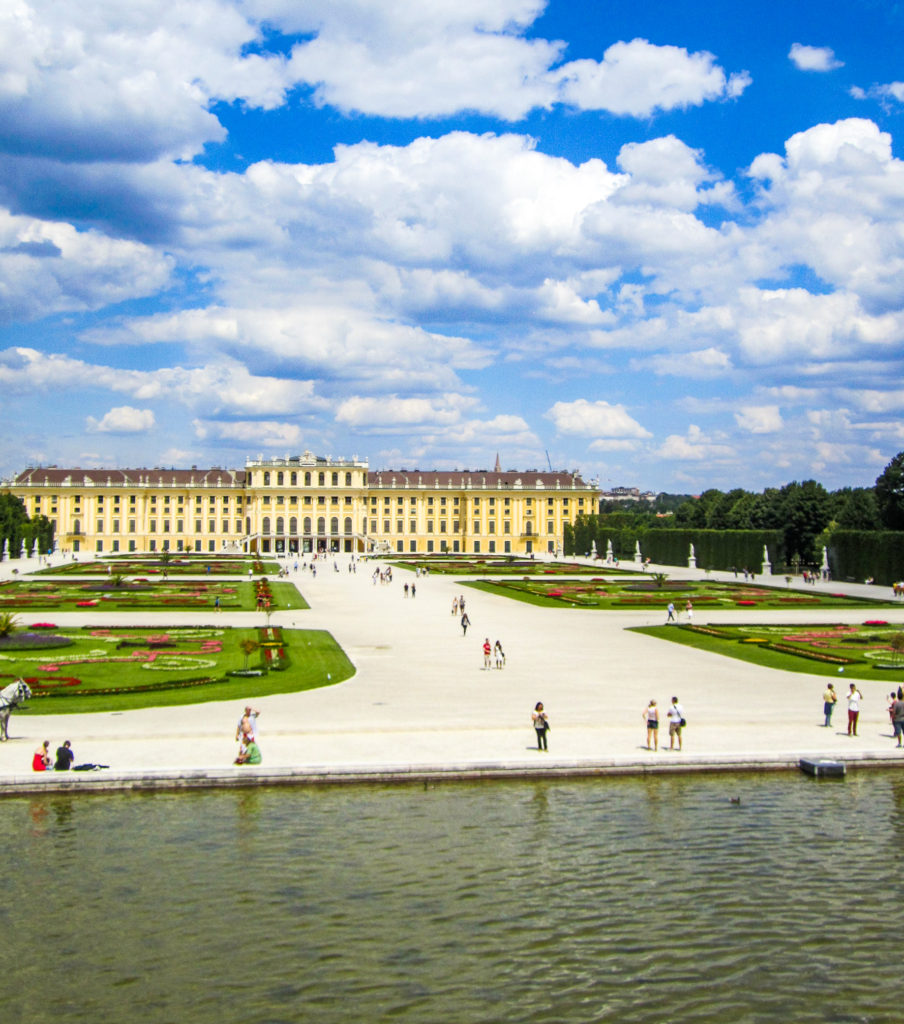
From the Neptune fountains pool
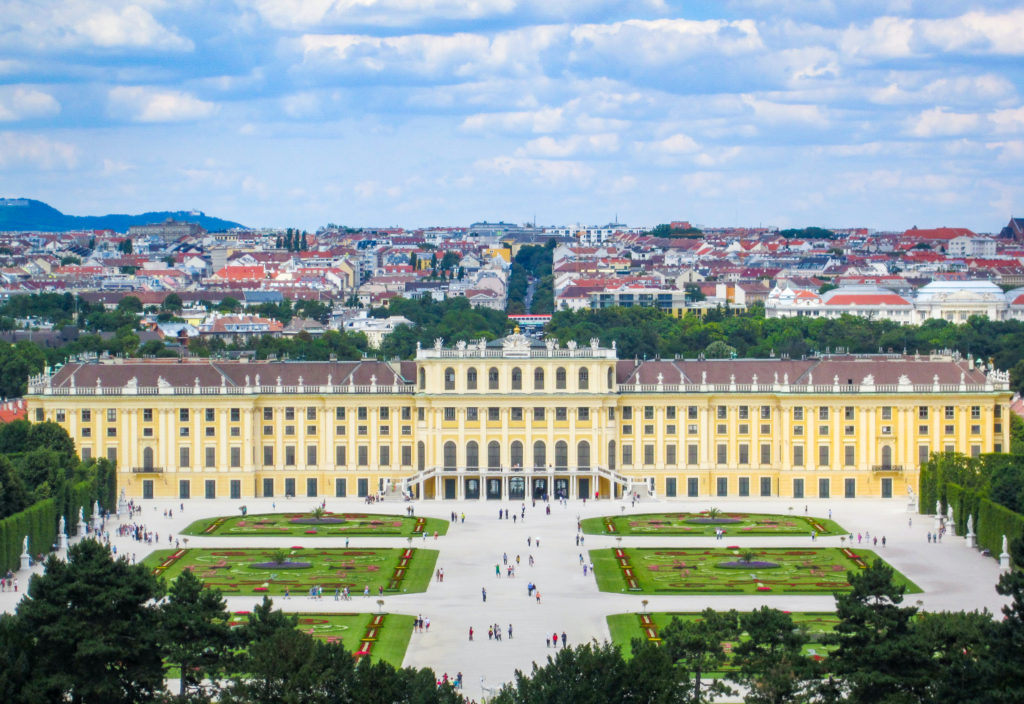
Higher elevation view of the palace from the Gloriette structure
Fisherman’s Bastion in Budapest, Hungary
The iconic facade of the Hungarian Parliament Building is probably the first sight that comes to mind when thinking about Budapest attractions, but the best location to view it is across the Danube River from the lookout terraces of Fisherman’s Bastion. Itself one of the most visited locations in Budapest, Fisherman’s Bastion is located within Buda Castle and is a great example of Neo-Romanesque architecture. Ever since it’s completion in 1902 the Fisherman’s Bastion has been taking pride of place across the Budapest Skyline.
Perched up the hill alongside Buda Castle, Fisherman’s Bastion and it’s 7 towers representing the 7 Hungarian Magyar tribes are hard to miss from almost anywhere in Budapest. And once you have made the arduous hike (or taken the more manageable funicular) from the river banks up to Buda Castle, you will be welcomed by the amazing panoramas of Budapest and the Danube that greet you.
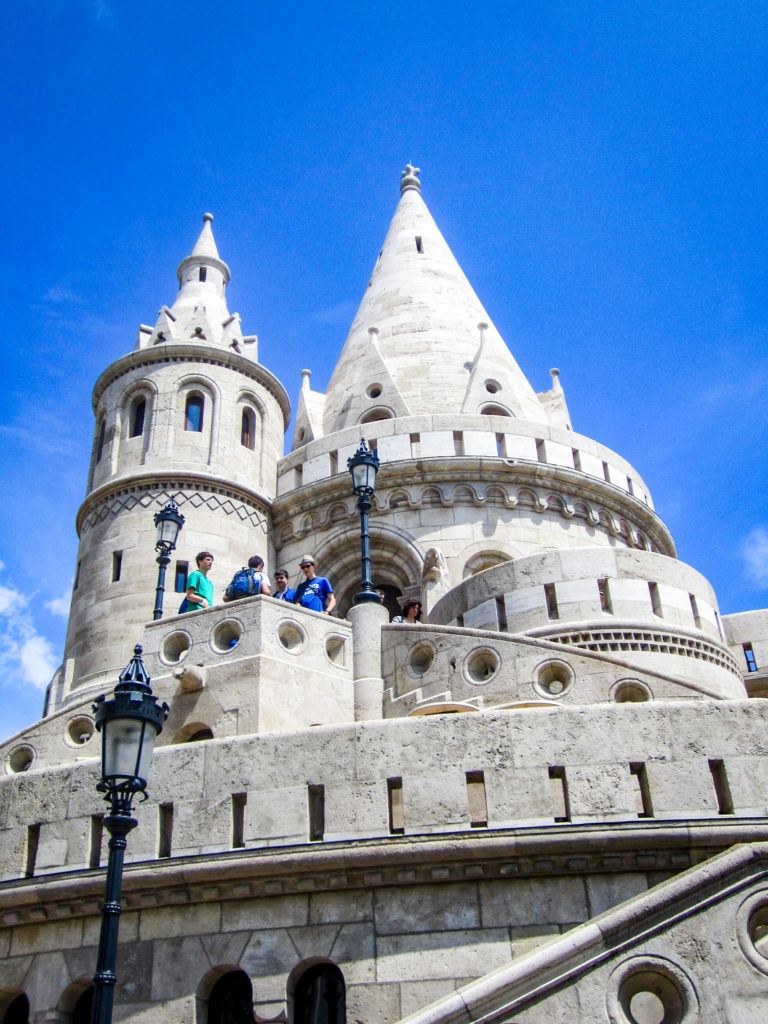
Main towering turrets of Fisherman’s Bastion
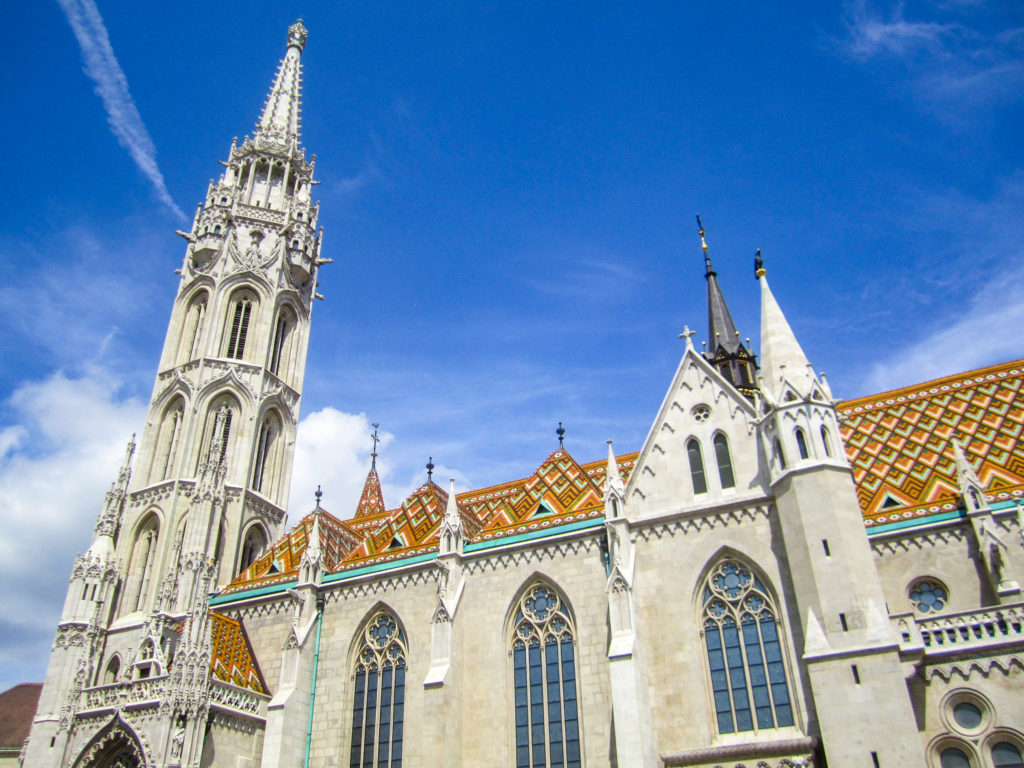
Matthias Church with its multicolored tiled roof
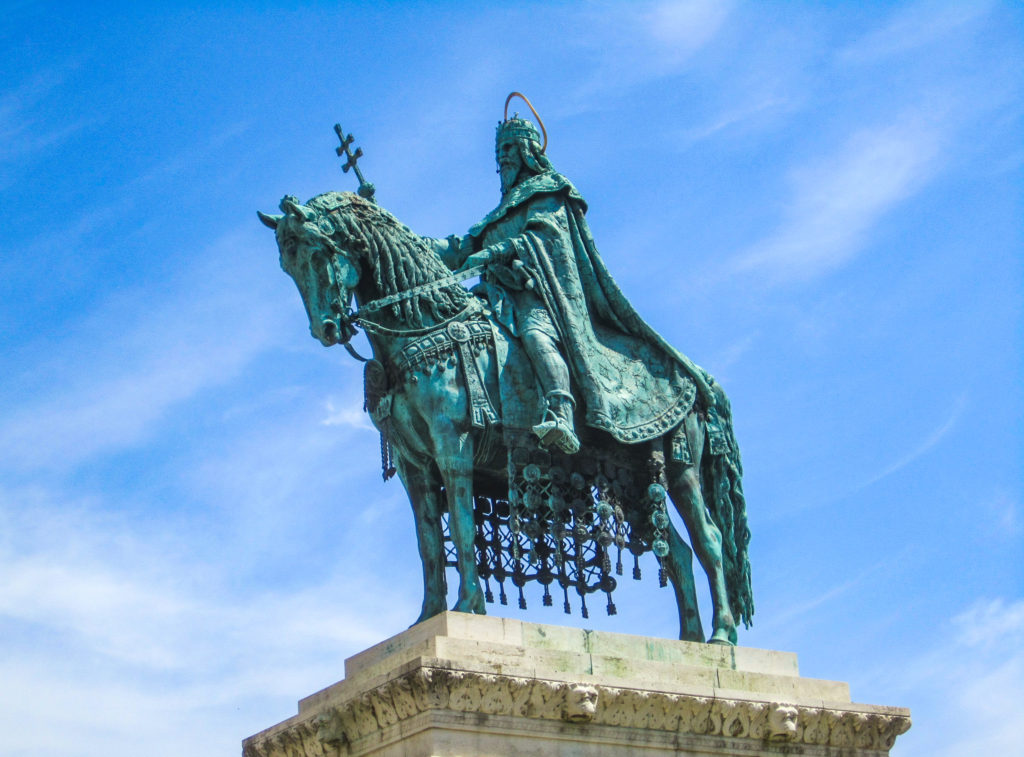
St Stephen watching over the main plaza
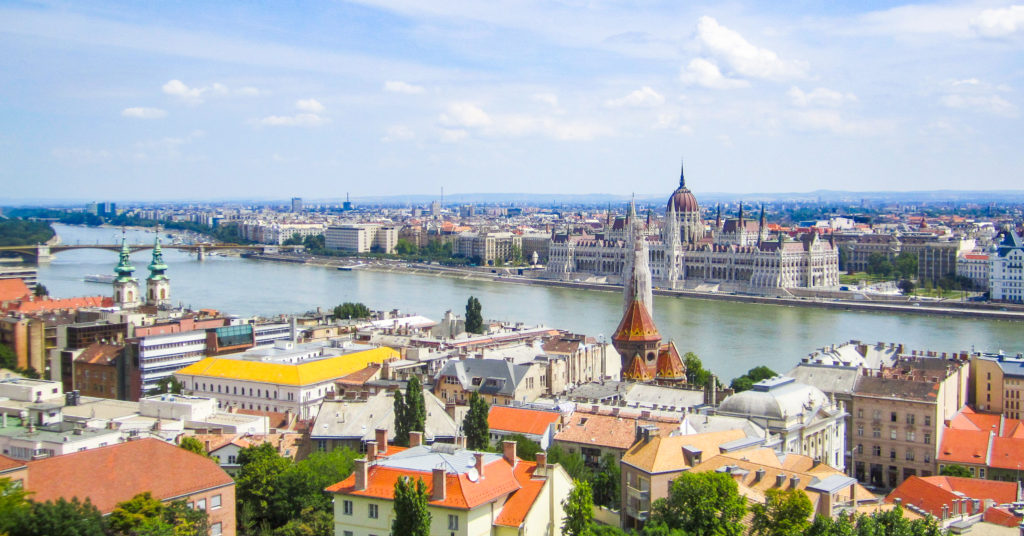
Amazing panoramic views of the Budapest skyline and the Danube River from the parapets
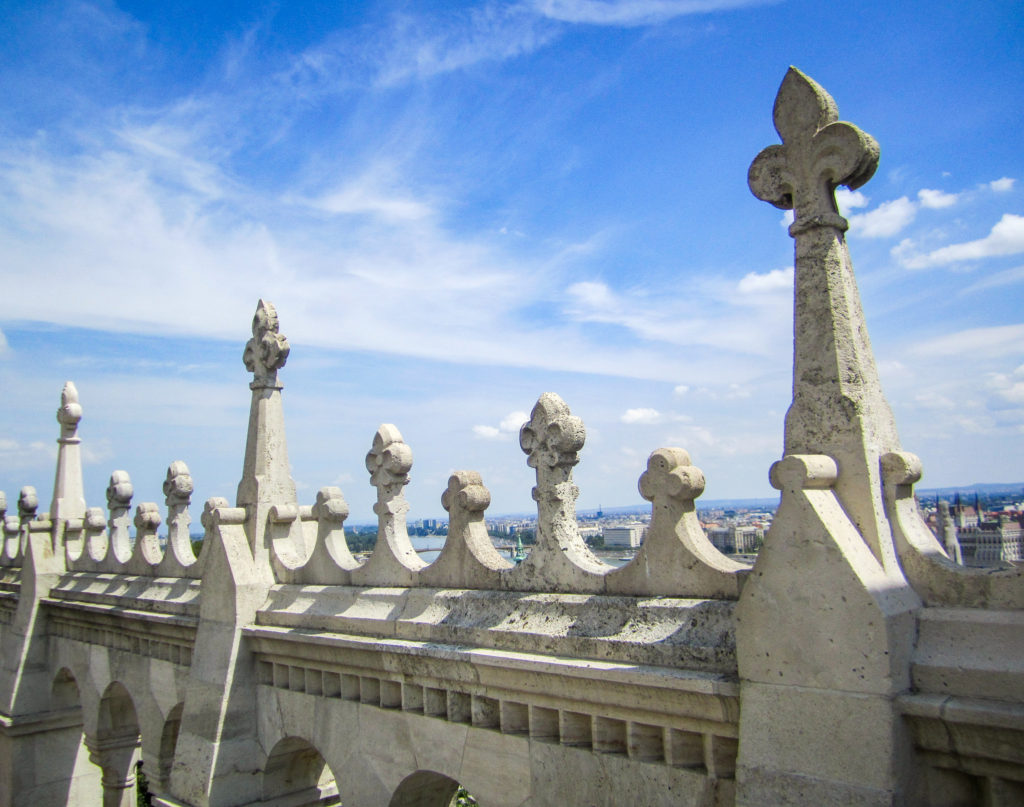
Stone carvings topping the parapet walls
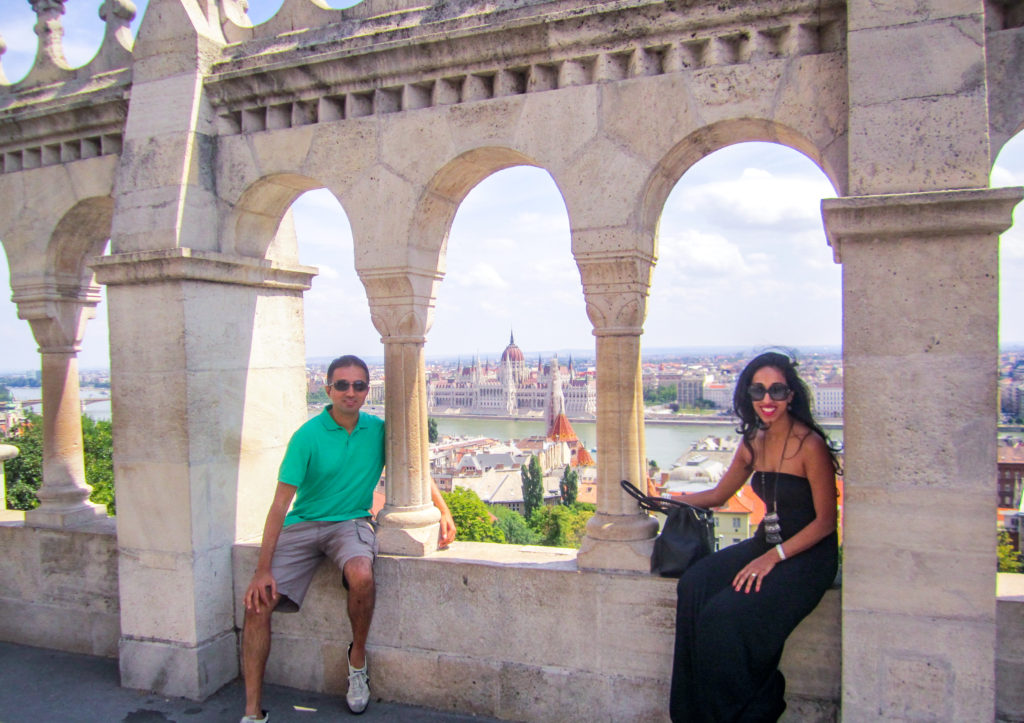
One of the many arched pillar viewpoints along the balcony
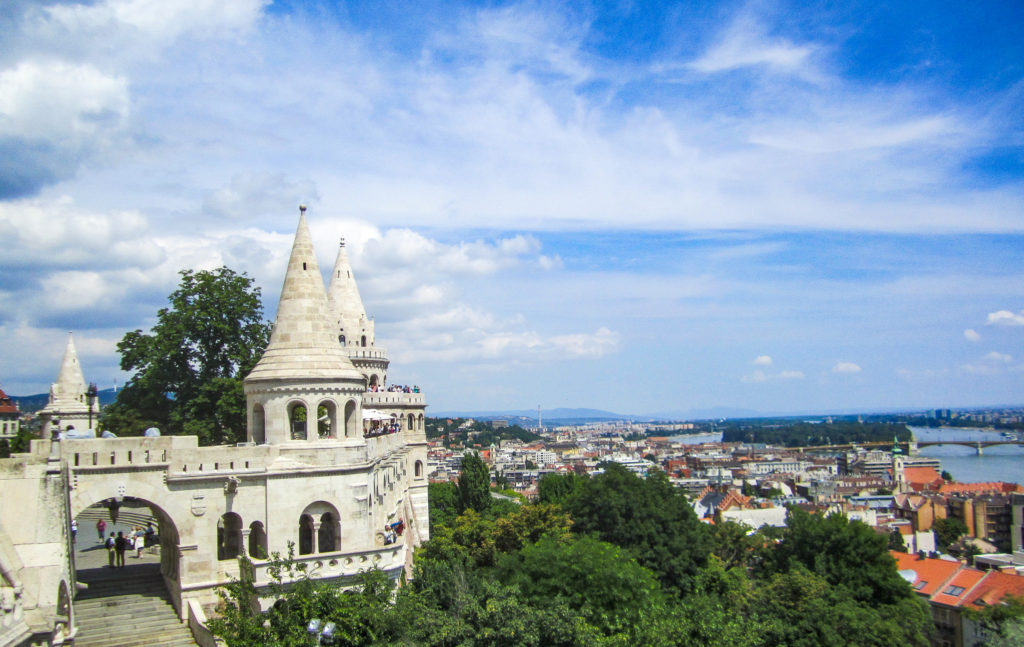
Views from one of the balconies
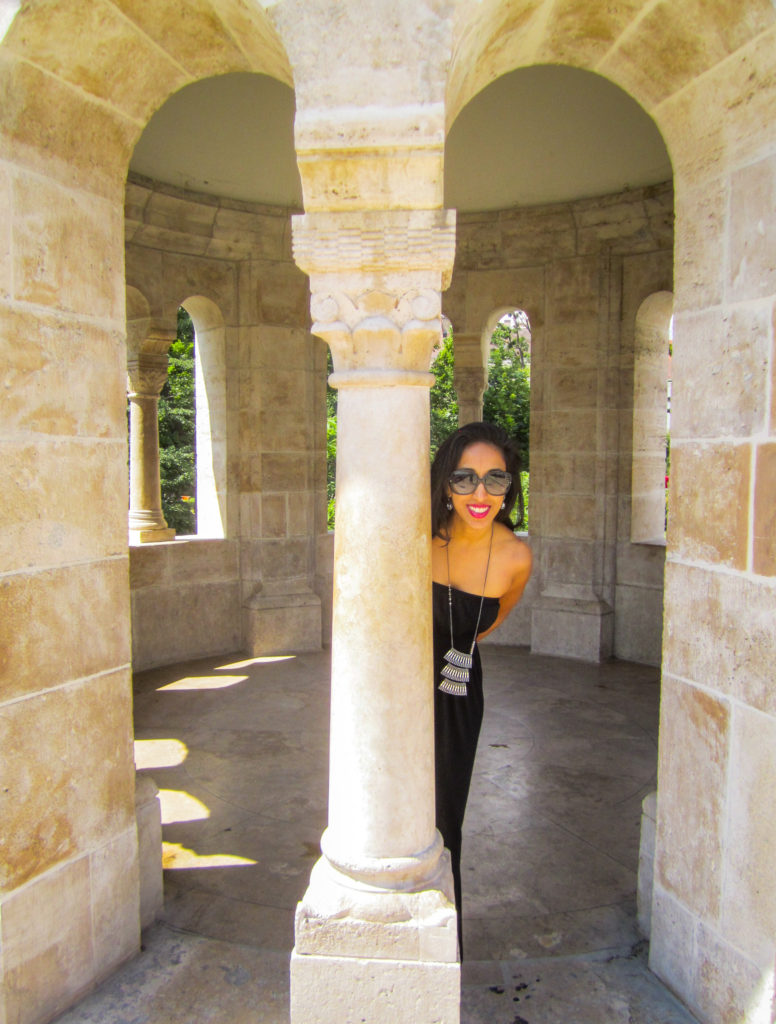
Hello!
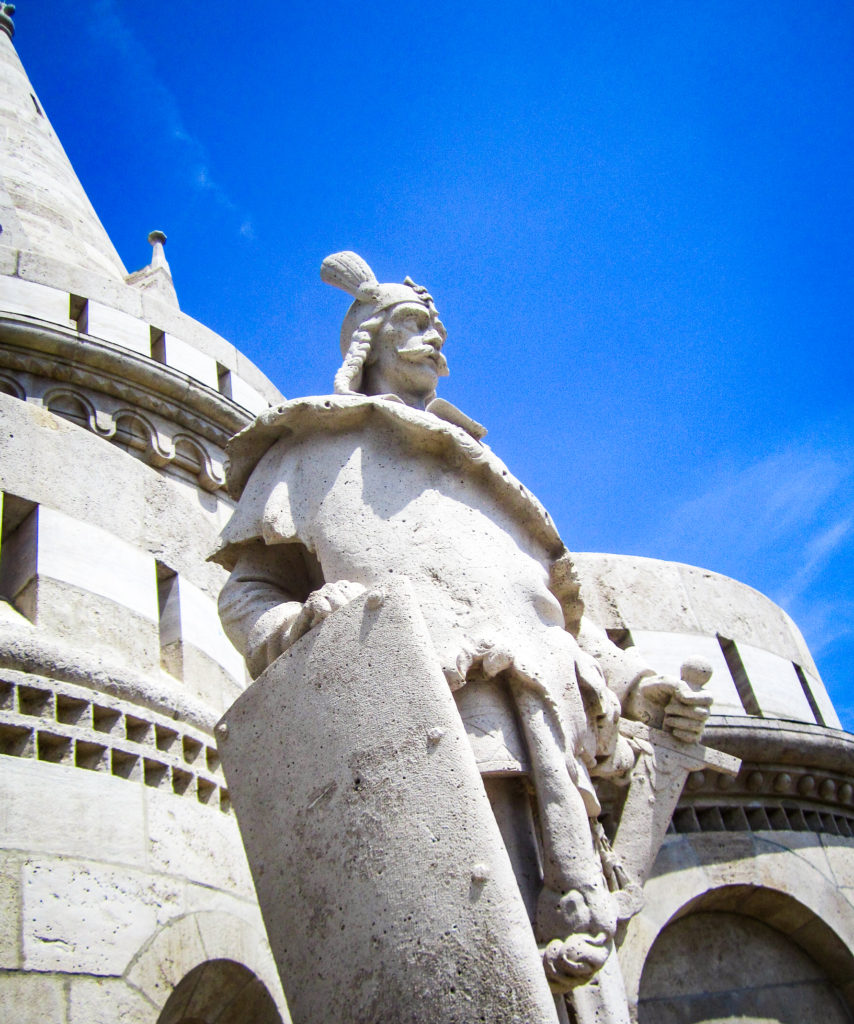
Statue of warrior keeping watch over the city

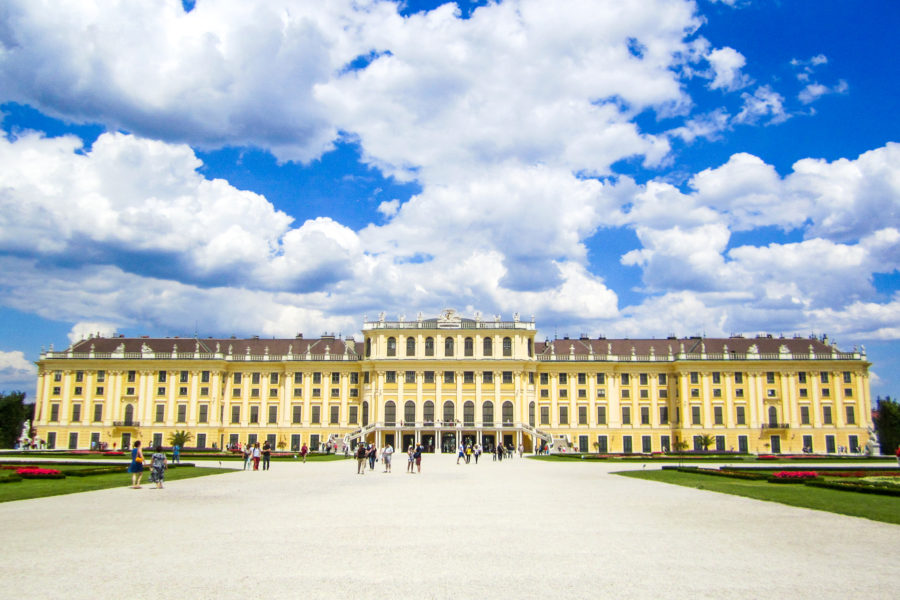
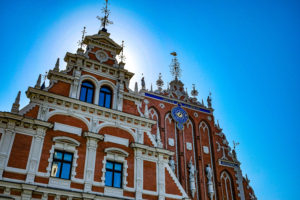
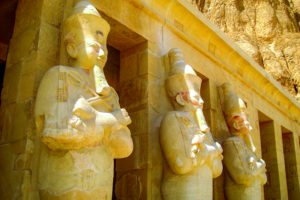
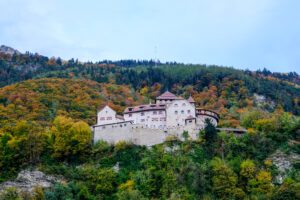




Leave a Reply
Please share your comments below!